Visiting RSPB Pagham Harbour LNR
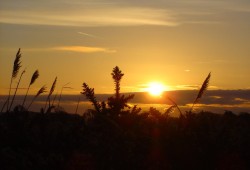
This sheltered inlet is an internationally important wetland site for wildlife, featuring saltmarsh and mudflats, lagoons, reedbeds, farmland and shingle beach. Follow our trails around the reserve, venturing past the old Sidlesham tramway, along the pebbly beach, and even to our neighbouring reserve, Medmerry.
Follow this link to find out what there is to see at RSPB Pagham Harbour Local Nature Reserve
Sussex Kelp Recovery Project
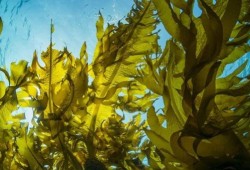
This year the Sussex Kelp Recovery Project celebrates its third anniversary.
In March 2021, over 300km² of seabed was protected from trawling by the Sussex Inshore Fisheries and Conservation Authority. This saw the creation of the largest marine rewilding project in the UK - Sussex Kelp Recovery Project.
Since then, they have initiated an enormous research and monitoring program to understand how marine ecosystems recover when we take away the human pressures and let nature lead in its own recovery.
Follow this link to read more about the Sussex Kelp Recovery Project
Coastal visits linked to well-being
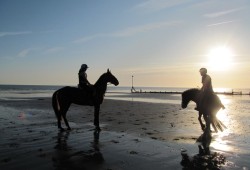
Coastal destinations are highly popular for leisure, yet the effects of spending time at the coast on mental and physical health have remained underexplored. To accelerate the research about the effects of the coast on health, Belgian scientists compiled a dataset from a survey of nearly 2000 Flemish adults about their visits to the Belgian coast.
Follow this link to read the article in Nature about Coastal visits linked to well-being
Hemsby 'roll-back' homes
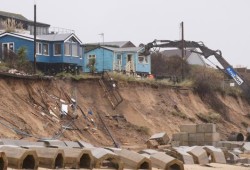
Villagers on a vulnerable stretch of coast at Hemsby, about 7.5 miles north of Great Yarmouth, who face losing their homes to the sea could be offered new plots further inland on which to rebuild their properties.
Follow this link to read more about the Hemsby roll-back proposal.
Marine Conservation Advice Packages
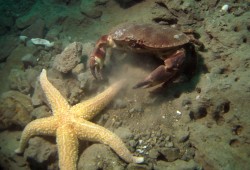
Natural England are publishing the new draft Marine Conservation Advice package for Yarmouth to Cowes Marine Conservation Zone (MCZ).
The updates to existing packages in this publication round are reflected in the most recent ‘October 2023 publication updates’ document, available on the MPA CA Guidance page. Marine Conservation Advice packages are summarised in their recent infographic on Marine Conservation Advice Packages.
Where to find marine conservation advice packages
The packages listed in this email can be accessed via the Marine Protected Areas: conservation advice packages collection on .GOV.UK, alongside previously published advice. Packages are split among sea regions, as detailed below. You can also navigate directly to the packages by using the search tool on Designated Sites View or via the Index Map.
BBC Breakfast Water Quality Special plus 'Our Sea Forest'
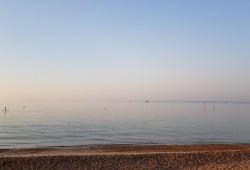
Rob and Bianca from the Clean Harbours Partnership Team have a couple of really relevant and interesting links to share.
If you happened to miss last week's BBC Breakfast Water Quality Special on Tues 5th September, which was filmed at Langstone Harbour, worry not! The Clean Harbours Partnership Team have curated and uploaded the most pertinent segments relating to the Clean Harbours Partnership's efforts on their YouTube channel. You can watch them here: https://youtu.be/BbP4n5HihXM?si=9sGLJmh6WlbtKUDf
They would also like to share a link to the recently aired BBC program, 'Our Sea Forest,' which aired on Friday 8 September 2023. Produced by talented local filmmaker Sarah Cunliffe, this show delves into the potential rejuvenation of kelp beds off the Sussex coastline. Kelp beds are vanishing at an alarming rate, with over 95% of these crucial 'blue forests' disappearing in locations as diverse as California and Tasmania. In the United Kingdom, our kelp forests could vanish within the next 75 years. These underwater forests serve as vital nurseries for numerous marine species, oxygenate the water, offer protection against storm surges and coastal erosion, and their ecosystems help sequester substantial amounts of carbon dioxide. They also play a pivotal role in mitigating the effects of climate change. 'Our Sea Forest' now symbolizes the aspirations of many for a brighter future. Catch up here: https://www.bbc.co.uk/programmes/m001q97d
Make A Difference Awards MWHG
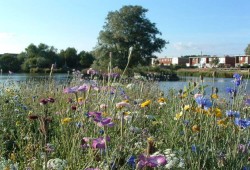
Great news from the Manhood Wildlife & Heritage Group (MWHG) – the group is a finalist in the Green Award category of the Make A Difference Awards, and members of the group have been interviewed on BBC Radio Sussex and Suffolk about their work.
MWHG will feature on BBC Radio Sussex as a finalist of the BBC Radio Sussex and BBC Radio Surrey Make a Difference Awards, across five shows from the 21st to the 27th August 2023.
The annual Make a Difference Awards recognise people and groups who make life better for others in their communities. In June, MWHG was elated to hear that out of thousands of nominated groups and individuals, they had been selected as one of four finalists in the Green Award category.
In the lead up to the second round of judging, due to take place shortly before the results are announced on the 25th September 2023, the group was invited to be interviewed for a featured story about their community led conservation work, which protects nature on the Peninsula south of Chichester, West Sussex.
Listen on BBC Radio Sussex and BBC Radio Surrey
You can hear our story at the dates and times listed below, on BBC Radio Sussex on 104.5, 95.3FM and DAB and on BBC Radio Surrey on 104.0, 104.6FM and DAB. Anyone outside of these areas can listen live or catch-up on BBC Sounds.
Wednesday 23rd August | Breakfast 7:45 am
Thursday 24th August | Morning 11:50 am
Friday 25th August | Afternoon 3:20 pm
Sunday 27th August | Morning 11:50 am
The Future of Seaside Towns Follow Up Report
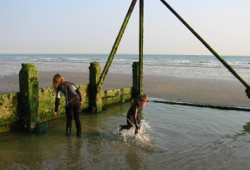
Following up on the 2017 government report on seaside towns, an new report including the Levelling Up Agenda and a review on progress has been issued.
The original report looks at the regeneration of seaside towns and communities and suggests that the 'one size fits all' approach should be avoided, with transport and housing being two of the key issues. The report states:
'Seaside towns must be inspired to regain their pioneering spirit and evolve to meet present day and future challenges. We are convinced that they can reinvent themselves with a long-term, place-based vision—a comprehensive approach that involves working with a range of partners to address multiple causes of social problem in a locality—that is supported by local leaders and grounded in each town’s unique assets'.
Follow this link to read the Future of Seaside Towns Follow Up Report 2023
Follow this link to read the original Future of Seaside Towns Report 2017
National Drought Group

Summer 2022 followed a trend towards hotter drier summers. Record breaking temperatures exceeded 40C for the first time and for many parts of England it was the driest summer on record. Drought conditions remained across most of the country for the latter part of the year, and exceptionally low water resources levels continued to impact the environment, water companies and farmers.
We are more prepared for droughts than ever before, particularly when compared to the well-remembered drought of 1976. Water companies and the Environment Agency continue to implement pre-agreed drought plan measures when necessary, and have taken action to conserve and supplement water. But there is more to do and we must prepare for worst case scenarios such as a dry winter.
The National Drought Group has produced a National Framework for Water Resources that clearly sets out the challenges we may face in the future as our climate changes and our population grows. It sets targets to help meet the deficit and use water resources in the best way. Together with the government and water companies, we are determined to drive forward and intensify that work to meet and beat the targets, as well as working collaboratively with farmers and others to deliver secure, sustainable and affordable supplies of water for us and the environment.
The National Drought Group is made up of senior decision-makers from the Environment Agency, government, the Met Office, water companies and key farming and environmental groups
Follow this link to read more about drought planning by the NDG in 2023
Follow this link to read Defra's policy paper on cleaning up our waters and ensuring a plentiful supply for the future: Plan for Water: our integrated plan for delivering clean and plentiful water
Follow this link to read the Environment Agency document Drought Response: our framework for England 2017
Marine Species and Subsea cables report
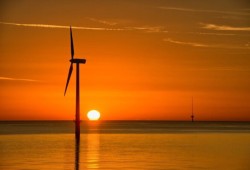
The Crown Estate and the Centre for Environment, Fisheries, and Aquaculture Science (Cefas) have released a report which aims to help stakeholders involved in offshore wind developments better assess the impacts of electromagnetic fields (EMFs) from subsea power cables on the marine environment.
The report will lead to an improved understanding of the potential effects of EMFs – produced by power transmitted through subsea cables – on marine species, providing further evidence to facilitate and accelerate decisions in the planning and consenting of offshore wind developments.
It is the result of a two-day workshop, organised by Cefas and the Scottish government, which brought together 15 leading scientific minds on EMFs from across a variety of fields, including electrical engineers, oceanographers, (geo)physicists and biologists to share knowledge and set out priority actions to improve future processes.
The report ‘Electromagnetic Fields (EMFs) from subsea power cables in the natural marine environment’ can be downloaded here and includes:
- A summary of the aims and objectives from the workshop
- A breakdown of methods for calculating, modelling, and measuring EMFs emitted by subsea cables
- A summary of methodologies for measuring the impacts of EMFs on marine life
- Short and longer-term recommendations for how to improve and standardise research in this field to allow greater sharing of data and evidence
- Recommendations for future research in this field
The report provides insights that will feed directly into a follow-on project, funded by Offshore Wind Evidence and Change (OWEC), named ‘Floating Offshore Wind Environmental Response to Stressors (FLOWERS)’, which will build understanding of EMFs as an environmental stressor associated with floating offshore wind.
In total, four Cefas-led projects have been funded by OWEC, in a bid to build understanding of the interaction between offshore wind infrastructure and marine species. In addition to the EMF workshop, three further projects are currently underway:
- Nature Inclusive Cable Enhancement and protection (NICE) – making infrastructurework for biodiversity.
- Fisheries Sensitivity Mapping and Displacement Modelling (FiSMaDiM) –understanding how offshore wind development impacts fisheries.
- Floating Offshore Wind Environmental Response to Stressors (FLOWERS) -understanding little known environmental impacts of floating wind.
News coverage can be read at 4Coffshore, ReNews and OffshoreEnergyBiz. Further informarion on the Cefas/Crown Estate report of impacts of electromagnetic fields from subsea power cables on the marine environment can be read here.